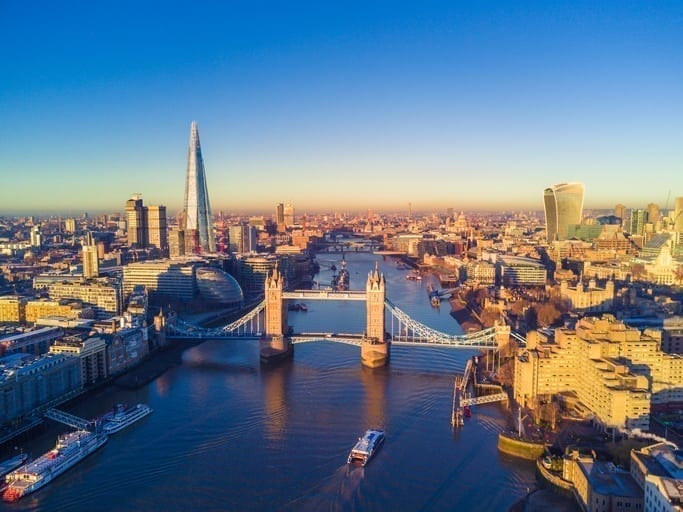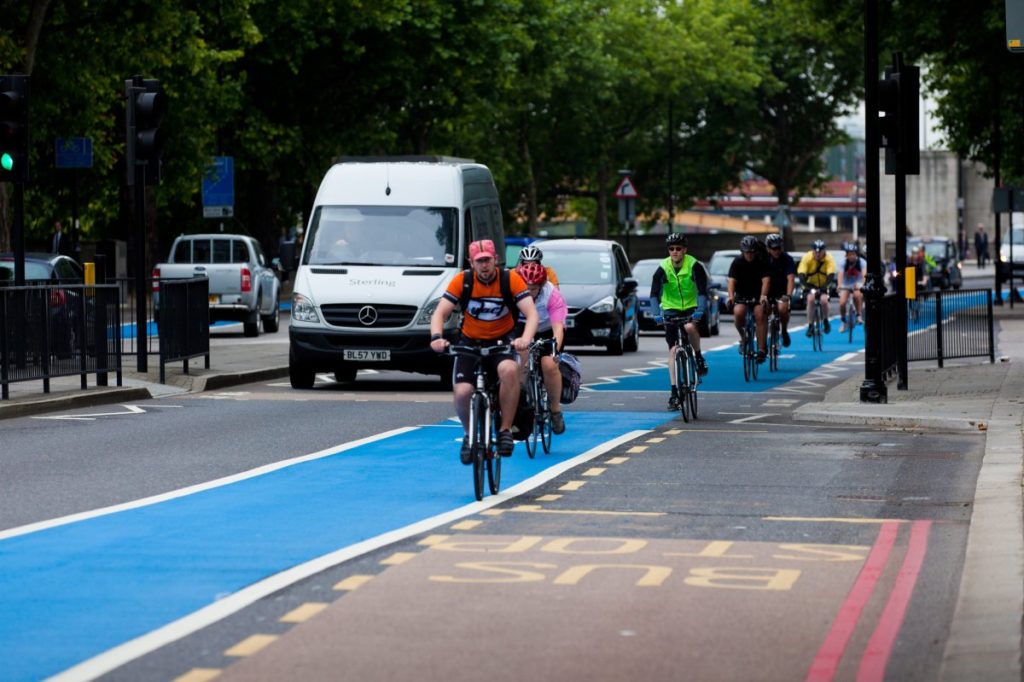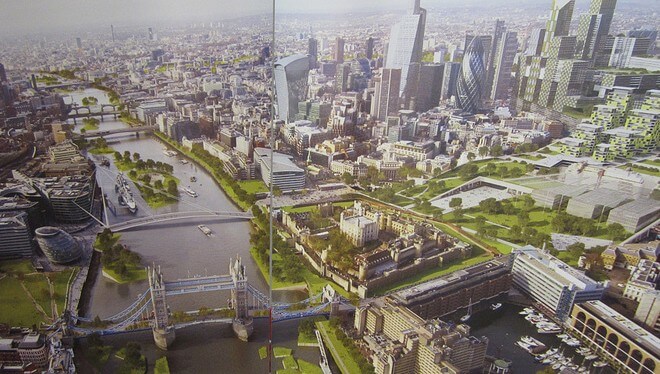
As it considers its post-COVID-19 recovery, London, known for its deadly 20th-Century smog, has committed to reaching net-zero carbon emissions by 2050.
While the government sees an opportunity to build a more buoyant, sustainable and low-carbon future, many say they are already falling behind in several areas including housing. Since signing the 2015 Paris Agreement, the UK has yet to put forward any significant policy changes required to get the country on the right path, instead putting it on course to miss the 2050 target altogether.
What Does Net Zero Carbon Mean?
Net-zero refers to the balance between the amount of carbon dioxide emitted, and the amount removed from the atmosphere to counteract said emissions. Before the COVID-19 crisis, 24 of London’s 33 boroughs had declared a climate emergency, and while setting a goal of net-zero carbon by 2050 is bold, the city is already responding to the challenge by developing new technologies and services to help dramatically slash emissions, neutralising the impact and hopefully, slowing climate change.
How Will London Achieve This?
London, like many others, is a city throttled with traffic and bursting with carbon-emitting processes and structures. If London’s population continues to grow at the current rate, by 2050, it may be home to more than 11 million people – further accelerating the climate crisis. To achieve net-zero status, transport, energy infrastructure, waste, construction and existing architecture, all need to take crucial steps to achieve carbon neutrality.
Transport
To meet the net-zero goal and reduce air pollution, the number of journeys made by car would need to decrease drastically. In order to get to net-zero by 2050, the city would need nearly a 60% reduction in car mileage, even if all cars were low emission, by 2035
Strategies including London’s congestion charge, its Ultra Low Emission Zone and the UK’s plan to prohibit all new petrol and diesel cars by 2035 are the first steps towards achieving this. Local zero-emission zones are planned to be introduced in 2025, which will then be rolled out citywide. This is further reinforced by temporary cycling lanes and car-free zones, some of which could become permanent features. But ultimately, any sustainable alternatives – cycling and public transport specifically – have to be appealing, accessible, convenient and affordable for people to use them.

Buildings
The construction industry is responsible for around 40% of the UK’s total carbon footprint, according to the UK Green Building Council.
Reducing carbon emissions of buildings means reassessing the choice of materials and construction methods. It also means paying attention to energy efficiency and the embodied carbon of a building. Carbons emissions within the construction industry point to everything from extracting, processing, manufacturing and packaging, to transporting the materials used, the construction process itself, as well as maintenance and eventual demolition. Glass, steel and cement rank high on the emissions metre with cement alone responsible for about 8% of global emissions due to its widespread use as cities rapidly grow. Cross laminate timber (CLT) is the building material that’s the most net-zero friendly as it is made from sustainably managed forests.
Furthermore, it’s imperative that the building design itself employs tactics to mitigate the existing impacts of climate change. Green roofs and walls – which seize carbon dioxide, reducing air pollution – also help insulate buildings and reduce energy demand. Robust insulation is a major factor, along with airtight doors and windows, LED lighting and minimised glazing.
Also Read: Climate Change Threatens World Heritage Sites
Power
The move from burning coal and gas to renewable, low-carbon energy sources such as solar, hydroelectric, wind and geothermal, has already begun in the UK.
Local energy production can also significantly cut emissions. Instead of relying on gas or electricity grids, with power generated in stations outside of London, energy is generated and supplied locally, such as through solar panels or district heating networks.
Waste
London produces seven million tonnes of waste each year, 41% of which is recycled. The target is to reduce food and associated packaging waste by 50% by 2030, this will include funding new water fountains to help Londoners reduce single-use plastic bottles. The 2030 target also promises to recycle 65% of waste and ensure that no biodegradable or recyclable waste is sent to landfill by 2026. All non-recyclable waste would then be converted into renewable energy that would be used to heat and power homes.

People
When we think of a greener London, we think of fewer cars – with those that remain likely to be electric, dedicated bus lanes and more space given to pedestrians. Bikes and electric rail could provide increased public transport with relatively low environmental impact, and there would ideally be more recycling facilities and fewer rubbish bins. Buildings would be made of brick, stone and wood, with their rooftops housing solar panels, greenery and vegetable gardens.
But paving the way to net-zero carbon will need to involve everyone, requiring innovation and collaboration between the public and private sector offering sustainable, convenient, accessible and affordable for measures for all.
Featured Image Credit: builddirect.com
- Britain Set to Release the First Approved COVID-19 Vaccine in Coming Weeks - 6th December 2020
- 11 Most Cinematic Couples to Ever Grace the Silver Screen - 18th November 2020
- Iconic Brands That Have Prospered for Over 100 Years - 16th November 2020






